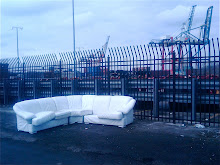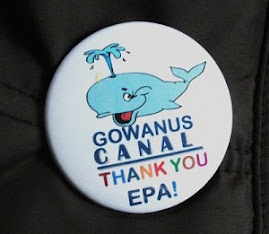In November, representatives from NABU, a German based environmental organization, visited New York to take pollution measurements at the Manhattan Cruise Terminal. NABU had been taking these tests at different cruise terminal location around the world, so these New York measurements were going to provide valuable information about the emissions from idling cruise ships berthed at our city's primary terminal.
Friends of the Earth, who have been collaborating with NABU, just released the results of these tests in a press release (here).
"At each port -- New York, Venice, Italy and Hamburg and Rostok, Germany -- samples taken by NABU with an ultrafine particle counter contained hundreds of thousands of microscopic ultrafine particles of soot per cubic centimeter of air. In New York, the sample contained 201,000 ultrafine particles of soot per cubic centimeter while the cruise ship Norwegian Gem was idling on Nov. 15, 2013."
NUBU recorded video of their particle counter taking the measurements in real time as the Norwegian Gem idled at the Manhattan terminal.
“These extremely high measurements at the cruise ship docks are from the use of heavy fuel oil or bunker fuel and lack of pollution control technology,”
He stated that, without pollution control technology, such as the use of particle scrubbing or the use of shore power, "cruise ship engines must operate continuously at the dock to keep the lights on, releasing huge quantities of toxic gases that harm public health."
And there's more (from the press release):
“These measurements now demonstrate for the first time how much worse air pollution in ports is made by the pollution from idling cruise ships,” said Miller. As the cruise industry continued to grow rapidly, this means that every year more and more passengers and residents of port cities are exposed to deadly soot. Since the technology needed to clean up emissions is here today, this is unacceptable.”
The release of the results of this study should give those of us who have been calling for the implementation of pollution mitigation practices - such as the use of shore power - at all of our city's ports more impetus to keep doing so. The evidence is clear. These idling ships are pouring out huge quantities of carcinogenic emissions into our city's air and into our residents' lungs, and that is totally unacceptable - especially because it's totally avoidable.
Friends of the Earth make the point that Carnival Cruise Lines, which operates all of the ships visiting the Brooklyn Cruise Terminal, has installed some pollution mitigating technology on some of its ships, but Marcie Keever, oceans and vessels program director of Friends of the Earth U.S., states,
This is a great point.
This should be a fleet-wide and port-wide practice. The same goes for the installation of shore power technology. In 2014, the Brooklyn Cruise Terminal in Red Hook is scheduled to become the first port on the East Coast to offer shore power, allowing all of the visiting cruise ships to turn off their engines (that's called cold ironing), and "plug in" to the city's electricity grid while at port, totally eliminating all of those harmful substances we have been discussing and providing great health benefits to the terminal's neighbors and the residents of our city.
These measures should be in place at all of our ports - including at container terminals - throughout our region. At the Ports of New York and New Jersey, the third largest port complex in the country, we should be implementing these life saving measures comprehensively - as is being done at the largest ports, the West Coast ports of LA and Long Beach. Just as Carnival is dragging its feet on pollution controls, so is the Port Authority of NY and NJ, which have been absolute laggards in addressing issues of port pollution. They are being left in the dust by their West Coast counterparts - and the residents of our city are being left in the soot!
Even if the Port Authority is dawdling on theses matters at our city's major container ports, the next easy step should be the one that is the clear consequence of the findings of the NABU study.
The Manhattan Cruise Terminal - operated by the NYC Economic Development Corporation - should be the next terminal to be equipped with shore power technology, as is currently being done at its Brooklyn counterpart. The residents of Manhattan's West Side should no more be inundated by the tons of emissions and carcinogenic particles created by the visiting cruise ships - up to three at a time - idling at the edge of their residential neighborhood. Why should the vulnerable residents of that neighborhood - children, the elderly, people with respiratory illness - be subjected to these harmful substances? Especially when their fellow New Yorkers, in Red Hook, Brooklyn, who are neighbors to the Brooklyn Cruise Terminal, after years voicing their objection to this practice, have secured a solution - the use of shore power for the cruise ships visiting their neighborhood's terminal.
This NABU study should convince us all - the City's "Idle-Free NYC" rule should apply to ships, too - and the cruise ships visiting the Manhattan Cruise Terminal should be the next ones to comply.
.



